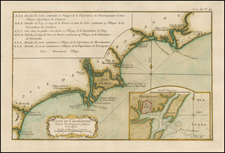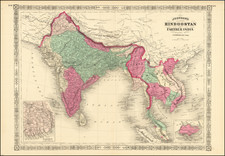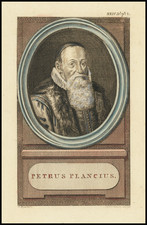The Defining Image of British Colonial Life in India, and One of the Most Successful Group Portraits to Ever Appear in Print.
This exceptional mezzotint by Richard Earlom captures the full effect of Johann Zoffany's original oil on canvas of a cockfight arranged by Colonel John Mordaunt, an illustrative episode in the court life of Asaf-Ud-Dowlah, the Nawab of Oudh.
Long held as one of the best illustrations of interactions between Indians and British colonials, this wonderful print combines the skills of two absolute masters of their craft; Johan Zoffany was one of the greatest portraitists of the 18th century whose oeuvre includes two of the great group portrait masterpieces of all time - the painting from which the present work was taken, and The Tribuna of the Uffizi; and Richard Earlom, Britain's greatest-ever mezzotinter. As such, this mezzotint can rightly be called one of the great group portraits ever put in print.
Context
The central figure of the picture, other than perhaps the cockfight itself, is the Nawab of Oudh, who is presented in a strange and somewhat buffoonish manner. The Nawab was held in very low regard by his British contemporaries, probably in large part because of his well-documented homosexuality. The man's proclivities are strongly hinted at in Zoffany's image, as he longingly looks towards Colonel Mordaunt (the thin man whose hand almost touches the Nawab's) with a hint of an erection, said to be much more obvious after the original painting's recent cleaning. In a letter from one of the painting's sitters to another, Claude Martin (a famous French colonial and Company School paintings collector) wrote to Ozias Humphrey commenting on the Colonel Mordaunt's relationship with the Nawab:
Colonel Mordaunt is now at the vizier's court, hunting, fighting cocks and doing all he can to please the Nabob in the expectation of being paid the large sums due to him by the Prince... although the Prince has dark and sinister intentions, but I fear much of his success, as the vizier is not much willing to pay his debts particularly to Europeans for what I know of his character I think it such that if one could read in his heart then one would perceive it loaded with many dark and sinister intentions and as you know those that compose his court you then ought to know what man he is. A man that delight in Elephant and Cocks fighting would delight in something worse if he feared nothing.
In this context, the Nawab's sexual arousal may have been a joke on the part of Warren Hastings. The combination of cockfighting (which even at the end of the 18th century was seen as lowbrow entertainment) and the allusions to proscribed sexuality, combine for a louche undercurrent that is far more than immediately meets the eye.
Zoffany included himself in the picture; he is the figure at right sitting and holding a brush while staring straight at the viewer.
Earlom made a number of mezzotints after other Zoffany group portraits, namely: The Academicians of the Royal Academy (1773), The Tenth of August 1793 (1795), The Embassy of Hyderbeck to Calcutta (1800), and Tiger Hunting in the East Indies (1802).
The first state of this print was published by Robert Sayer in 1792.
The key print for the present image can be seen here.
Robert Laurie (ca. 1755-1836) and James Whittle (1757-1818) formed their Fleet Street, London-based firm upon the 1794 death of their employer Robert Sayer, himself one of the dominant print and mapmakers of the last half of the 18th century.
Laurie & Whittle started managing Sayer's business as early as 1787. They took over all managerial duties when Sayer's health flagged in 1792, and they changed the imprint in 1794 upon his death. Sayer left the two a 21-year lease on the shop (at £100 a year) and on Sayer's Bolt Court premises, as well as an option to acquire stock and equipment at a preferential price of £5,000 payable over three years.
Robert Laurie retired from the firm in 1812, and his role was assumed by his son, Richard Holmes Laurie (1777-1858). The younger Laurie worked with James Whittle until the latter died in 1818. After R. H. Laurie died in 1858, Alexander George Findlay, FRGS (1812-1875) purchased the firm from his daughters. The firm continues today under another name, specializing in yachting charts.
Laurie & Whittle were prolific print and map publishers, and throughout their careers, they produced numerous very important and rare works. They carried on Robert Sayer's atlas business and were responsible for editions of The Complete East-India Pilot and The American Atlas.









![(Cleveland Beer Drinkers) [Photograph of Zwiebel Brigade Drinking Beer in Cleveland]](https://storage.googleapis.com/raremaps/img/small/96294.jpg)
![[Mumbai] Plan De Bombay et ses Environs](https://storage.googleapis.com/raremaps/img/small/75975.jpg)



